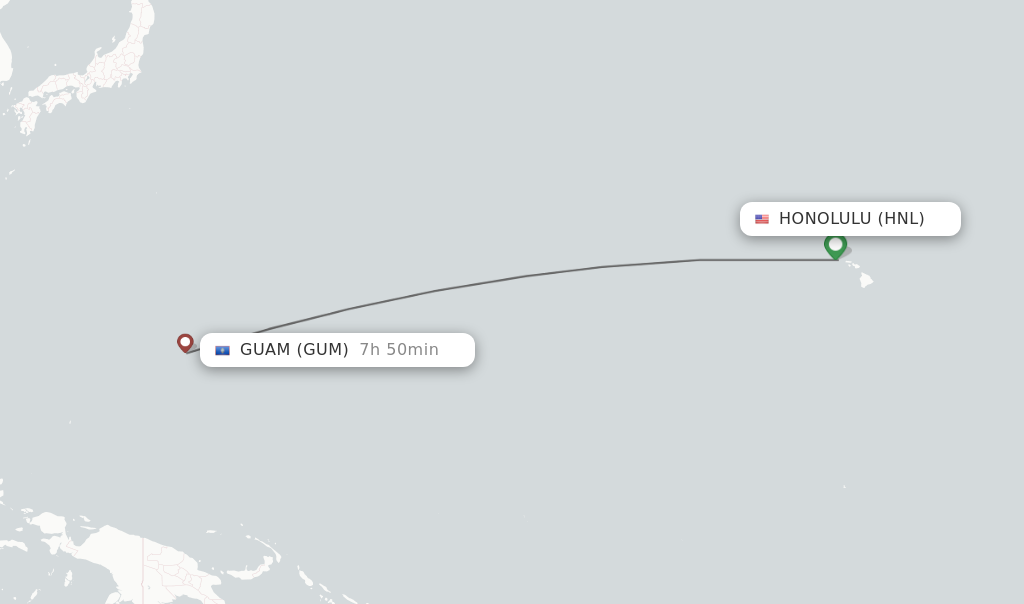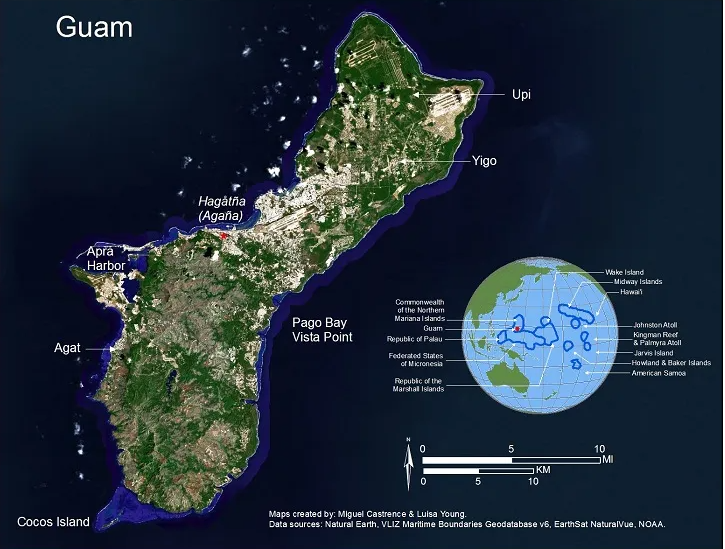Where is Guam ?

When most people hear “Guam,” they might picture a remote tropical island in the Pacific Ocean or maybe even recall it as a military base associated with World War II. But where is Guam ? Where is it located? And why does it hold such strategic and cultural significance? This blog post aims to answer these questions by delving into the geography, history, and modern-day relevance of this intriguing island.
Geographic Location of Guam
Guam is an unincorporated territory of the United States, situated in the western Pacific Ocean. It is part of the Mariana Islands archipelago, which forms the eastern boundary of the Philippine Sea. The island is approximately 3,800 miles west of Hawaii, 1,600 miles east of the Philippines, and about 2,100 miles south of Tokyo, Japan. This makes Guam one of the most remote locations in the world, yet it’s strategically positioned at the crossroads of East and Southeast Asia.

Guam is the largest and southernmost island in the Mariana chain, covering an area of about 210 square miles. The island is roughly 30 miles long and varies in width from 4 to 9 miles. The geography is diverse, with a mountainous southern region, a flatter northern plateau, and beautiful coral reefs surrounding much of the coastline.
Historical Context
Guam has a rich history that dates back over 4,000 years. The island was originally inhabited by the Chamorro people, who developed a unique culture that still influences the island today. The Chamorros were skilled seafarers and traders, known for their impressive navigational abilities and distinctive stone structures called latte stones.
Guam was first encountered by Europeans in 1521 when Ferdinand Magellan, the Portuguese explorer sailing under the Spanish flag, landed on the island. In 1565, Spain claimed Guam as a colony, and it remained under Spanish control for over 300 years. During this period, the island served as a crucial stopover for the Manila galleons, Spanish trading ships that sailed between Mexico and the Philippines.

In 1898, following the Spanish-American War, Guam was ceded to the United States under the Treaty of Paris. The island became an important military outpost for the U.S., particularly during World War II. In 1941, Guam was captured by Japanese forces, but it was recaptured by American troops in 1944 during the Battle of Guam. This battle was a significant turning point in the Pacific theater of the war.
Modern-Day Guam
Today, Guam is a vibrant and culturally diverse territory of the United States, with a population of around 170,000 people. The island’s residents are U.S. citizens by birth, although they cannot vote in U.S. presidential elections. The island’s capital is Hagåtña, and the most populous village is Dededo.
Guam’s economy is driven by tourism, military spending, and to a lesser extent, agriculture. The island attracts over 1.5 million tourists annually, primarily from Japan, South Korea, and the United States. Visitors come for Guam’s stunning beaches, crystal-clear waters, and rich cultural heritage.
The U.S. military presence is a significant aspect of life on Guam. The island hosts several key military installations, including Andersen Air Force Base and Naval Base Guam. These facilities play a critical role in U.S. defense strategy in the Asia-Pacific region. The military also contributes significantly to the local economy, providing jobs and infrastructure.

Strategic Importance
Guam’s location in the Pacific Ocean gives it immense strategic value. It is often referred to as the “Tip of the Spear” for U.S. military operations in the region. The island’s proximity to potential hotspots like the Korean Peninsula, the South China Sea, and the Taiwan Strait makes it a vital base for power projection.
In recent years, Guam has been at the center of geopolitical tensions, particularly concerning North Korea. The island has been mentioned as a potential target for missile attacks due to its military significance. This has led to discussions about the island’s defenses and the safety of its residents.
Cultural Significance
Despite its small size and remote location, Guam has a rich and diverse culture. The Chamorro culture remains a vital part of island life, with traditions passed down through generations. Chamorro cuisine, music, dance, and language are celebrated and preserved by the local community.
The island’s culture is a blend of indigenous Chamorro, Spanish, Filipino, Japanese, and American influences. This unique cultural mix is evident in everything from the island’s festivals and food to its architecture and art.

Guam
is more than just a dot on the map; it is a place of immense historical, strategic, and cultural significance. Its unique location in the Pacific Ocean has made it a key player in global affairs, from the days of Spanish exploration to modern-day geopolitics. Whether you’re interested in history, military strategy, or simply looking for a beautiful travel destination, Guam offers a fascinating and rewarding experience. So the next time someone asks, “Where is Guam?” you can confidently answer that it is not only a location but a rich tapestry of history, culture, and strategic importance.